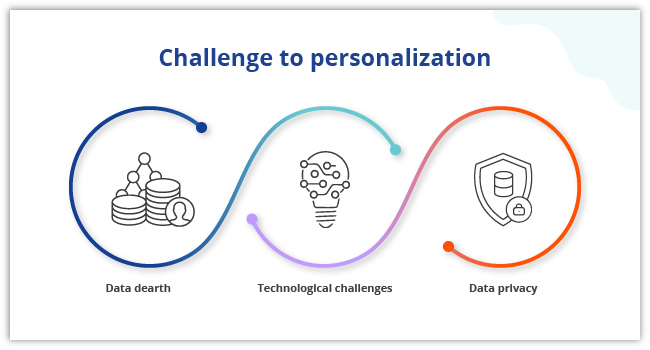Retailers have been rapidly investing in digital strategies to keep pace with changing customer demands. Because of this, more and more consumers are turning to their smartphones and other digital devices to make purchase decisions. However, these efforts can be complicated by the fact that many shoppers do not have a great deal of information about the brands they trust.
This means that many retailers must carefully tailor their digital experiences for each individual customer in order to maintain trust without violating customer privacy standards. In this article, we’ll explain how customer data privacy and personalization work together, examples of how they may intersect with your business and steps you can take to integrate personalization into your retail marketing strategy.
What is Customer Data Privacy?

source: Google Images
Customer data privacy is the practice of protecting the privacy and security of customers’ personal data while using digital services. Even though you have a customer data file on file, you can’t yet trust it. Trusting the data file means having confidence that the information in it is accurate and unaltered.
It is a basic human right of a company to know who its customers are, what they like, and how to best serve them. Retailers should use customer data privacy as a way to keep customers’ information safe, build trust with each individual, and ultimately grow their business.
Personalization and customer experience are two aspects of customer data privacy that must be considered as you develop and implement your digital strategy. Choosing the right customer data privacy solutions and practices is important to mitigating risk, while also giving your customers the experience they want.
Personalization and Customer Experience
Personalization is the process of offering a product, experience, or another thing to each specific customer. It is the way a company determines what product to give to which customer based on different characteristics like age, location, previous purchases, and so on. There are many different ways to personalize an online experience.
You can personalize by using an automated system that learns from your online activity and behavior to recommend products or services you might like. Or, you can do it manually by using an AI-based recommendation system and understanding the context of each customer, like the type of device you are using, your location, and the specific data you are gathering.
Personalization can play a critical role in the overall customer experience. It can be used to address the many individual preferences and needs of the customers, whether it is the color of a product, the design of a product, the function of a product, or the price of a product.
How does Personalization Intersect with Customer Data Privacy?
Personalization and customer data privacy intersect in two areas. They intersect firstly, with regard to how you build your digital strategy. Before you can go through the process of personalizing your digital experience, you first have to collect customer data. Once you have that data, you can start to build a customer-centric digital strategy that is designed to keep your customers happy and engaged.
Secondly, they intersect with regard to risk management. Retailers must carefully consider the various risks they are taking when they personalize their products, instructions, and messaging for each individual. They must also consider the risks associated with collecting and using customer data. These risks can include reputational damage, regulatory fines, and damaged customer relationships.
Challenges of Personalization for Retailers

source: Google Images
There are many challenges associated with personalization for retailers. These challenges include understanding the customers, managing the data risk, and transferring the data risk.
Understanding the Customer – Retailers need to get a better understanding of their customer’s individual preferences, values, and needs. As they enter the customer data, they need to look beyond the data they collect and look at where it is being used. This can help a retailer make sure that the data is being used in a way that is consistent with the customer’s expectations.
Managing the Data Risk – As retailers collect data, they need to help mitigate the data risk by ensuring that customers are able to control how their data is used for marketing purposes. This includes providing clear notice about what data is being collected, by whom, and for what purpose.
Transferring the Data Risk – As retailers continue to personalize their digital experience, they will eventually encounter the challenge of transferring the data risk. This means that the retailer will need to decide whether or not to keep the customer data file on file. If the retailer does choose to store the data file on file, they now have the opportunity to blur the lines between customer data privacy and marketing.
Bottom line
As consumers look more to their smartphones and other digital devices to make purchase decisions, retailers must carefully tailor their digital experiences for each individual in order to maintain trust without violating customer privacy standards. In order to do this, retailers must first understand their customers, manage data risk, and transfer data risk.
Now that you have a better understanding of the topic, you can begin implementing these best practices into your retail strategy. These strategies will help you better understand your customers and provide a personalized experience that they will appreciate.

